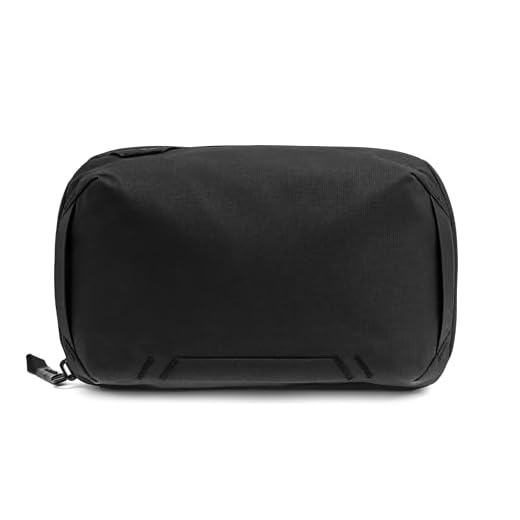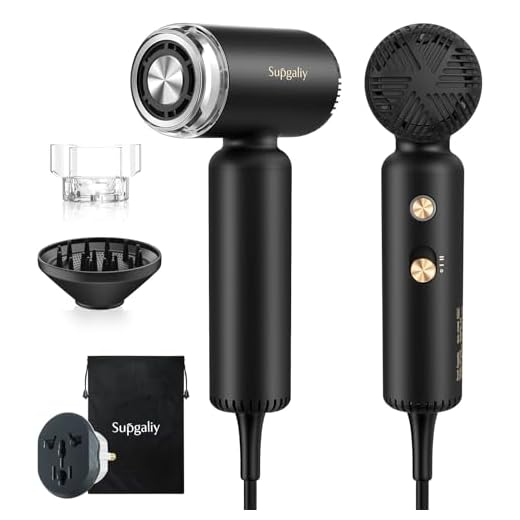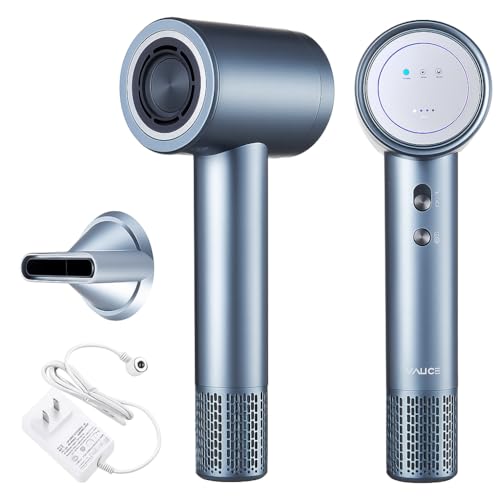







Short answer: Small electric styling appliances are normally allowed in hand baggage and checked bags under TSA and IATA rules, provided lithium batteries meet watt‑hour limits and spare cells are carried in the cabin only.
Regulatory limits: Lithium‑ion cells ≤ 100 Wh – airline approval not required; > 100 Wh and ≤ 160 Wh – airline approval required; > 160 Wh – prohibited on passenger aircraft. Spare batteries must remain in the cabin and have terminals taped or be in original packaging.
Device examples: Typical cordless styling units use about 10–30 Wh (example: 7.4 V × 2 Ah ≈ 14.8 Wh). Mains‑only hot‑air blowers draw high wattage (often 1,200–2,000 W) but usually contain no lithium cells and are treated as ordinary electrical items; airline policies may still vary.
Packing checklist: 1) Verify battery watt‑hour rating on the cell or in the manual; 2) Remove removable cells when possible; 3) Place spare cells in hand baggage with terminals insulated (tape or terminal caps); 4) Let the appliance cool and stow in a protective pouch; 5) Keep the item accessible for inspection at security checkpoints.
Voltage and adapters: Confirm dual‑voltage capability or bring an appropriate voltage converter/adapter for international destinations; note input wattage on the device to avoid overloading adapters.
Airline enforcement: Security officers may require placement in checked baggage or removal of items with damaged batteries. For final confirmation, consult the specific carrier’s prohibited‑items page or contact the departure airport’s security office before travel.
Recommendation: Pack a compact, dual-voltage portable styling device in hand baggage; spare lithium cells and external battery packs must be carried in the cabin with terminals insulated and declared if required.
TSA and ICAO-based rules permit electric styling appliances in both hand baggage and checked bags, but lithium battery limits and handling take precedence. Spare lithium-ion cells are prohibited in checked baggage and must be transported in hand baggage with terminals taped or in original packaging. Cells between 100–160 Wh require airline approval; cells above 160 Wh are not allowed on passenger aircraft.
Corded models (no internal battery) are generally acceptable in either bag type; unplug the unit and secure the power cord to prevent accidental activation. Cordless models with built-in lithium batteries are best carried in hand baggage to facilitate inspection and reduce risk of loss. Remove and stow removable batteries in the cabin when possible.
Voltage mismatch is a frequent issue on international routes: choose a dual-voltage appliance or bring a compact step-down converter for destinations with lower mains voltage. In-flight power outlets are not designed for high-wattage styling tools and may not supply sufficient current.
Packing checklist
– Confirm battery capacity printed on the cell or device (Wh or mAh with voltage). 100–160 Wh needs airline approval; >160 Wh prohibited.
– Place spare cells and power banks in hand baggage with terminals insulated and protected from short circuit.
– Secure the appliance against accidental switch-on; use a hard case for bulky units.
– Verify carrier-specific rules before departure; low-cost and regional operators may impose additional limits.
| Item | Allowed in hand baggage? | Allowed in checked bag? | Battery rules / notes |
|---|---|---|---|
| Corded electric styling appliance (no battery) | Yes | Yes | Unplug and secure cord; no special battery rules |
| Cordless unit with installed lithium-ion cell | Yes (preferred) | Depends on carrier – preferable in hand baggage | Installed batteries usually permitted; removable spares must stay in cabin |
| Spare lithium-ion cells / power banks | Yes (terminals protected) | No | 160 Wh prohibited |
Airline verification
Confirm the specific operator’s policy before travel and declare high-capacity batteries at check-in when requested; follow local aviation authority guidance for the departure and arrival countries.
TSA and US security rules for styling appliances in cabin baggage
Place non-battery styling appliances inside cabin bags for screening; battery-powered units must have batteries installed while spare lithium cells are carried only in the cabin and protected against short circuits.
Lithium-ion capacity limits: up to 100 Wh allowed without carrier approval; 100–160 Wh allowed only with airline approval (maximum two spare batteries in that range); greater than 160 Wh prohibited from both cabin and checked compartments. Calculate watt-hours as V × Ah (example: 3.7 V × 2,200 mAh = 8.14 Wh).
TSA screening: all small appliances are subject to X-ray. Large or dense styling tools may require removal from the bag for separate screening; officers may request an operational demonstration for devices with electronic controls. If a device cannot be powered on when requested, expect secondary inspection or possible seizure.
Spare battery handling: never place spare lithium cells in checked baggage. Protect terminals with tape, original packaging, or individual plastic pouches/cases. Labeling of high-capacity packs (Wh marking) speeds review.
Airline rules vary; consult the specific carrier before travel, especially for dual-voltage pro units or integrated battery models over 100 Wh. For bulky AC-only appliances that create slow boarding checks, placing them in checked baggage reduces inspection delays at security.
Battery-powered, cordless and lithium-ion styling tools: permitted or restricted?
Recommendation: Remove removable lithium‑ion packs and transport spare batteries only in the aircraft cabin with terminals insulated; installed batteries under 100 Wh are normally acceptable, packs between 100 Wh and 160 Wh require airline approval (limit often two spares), and batteries above 160 Wh are prohibited on passenger aircraft.
Technical limits and rules
- Watt‑hour calculation: Wh = volts (V) × ampere‑hours (Ah). Always check the label or supplier spec to obtain V and Ah or direct Wh rating.
- Lithium‑ion (rechargeable): ≤100 Wh – generally permitted in cabin and when installed; >100 Wh and ≤160 Wh – airline approval required, commonly limited to two spare packs per passenger; >160 Wh – not permitted on passenger flights.
- Lithium metal (non‑rechargeable): cells with ≤2 g lithium content are allowed in cabin and often as installed items; larger cells are subject to dangerous‑goods restrictions.
- Spare lithium batteries are typically forbidden in checked baggage by most carriers and must be carried in the cabin.
- Devices with non‑removable batteries are treated as having installed batteries; if pack rating exceeds 100 Wh, airline approval is usually required.
Packing and handling checklist
- If battery removable: remove it and place inside the cabin bag; insulate terminals with original packaging, terminal covers, or electrical tape to prevent short circuits.
- If battery non‑removable: verify the Wh rating; if >100 Wh, contact the airline for written approval before travel.
- Limit spare high‑capacity packs: follow the two‑pack rule for 100–160 Wh where applicable; never transport spares above 160 Wh on passenger aircraft.
- Use protective sleeves or individual compartments to prevent contact between batteries and metal objects (keys, coins, chargers).
- Labeling: retain manufacturer labels showing Wh or correct V and Ah; present this information to airline or security staff on request.
- At screening: expect devices to be removed from baggage for inspection; malfunctioning, swollen, or damaged packs are prohibited.
- Before booking: review specific airline and departure/arrival country regulations, since carriers may impose stricter limits than international guidance.
Wattage, voltage and dual-voltage: will your styling device work at your destination?
Use a dual-voltage styling device with either an automatic 100–240 V input or a manual 110/220 switch; if the label shows a single voltage, obtain a heavy-duty step-up/step-down transformer rated above the device’s wattage or buy a local replacement.
Read the input plate: examples – “Input: 120 V~60 Hz 1600 W” (single-voltage) versus “Input: 100–240 V~50/60 Hz 1600 W” (universal). Typical power draws: travel models 400–700 W, salon-grade blowers 1500–2400 W, straighteners 25–130 W. Match transformer continuous rating to the stated wattage plus a 25–30% safety margin.
Distinguish adapter from converter: a plug adapter only changes pin shape; it does not alter voltage. A voltage converter/transformer changes voltage. Small travel converters often handle 100–300 W only; motors and heating elements above ~1000 W require a true transformer rated for continuous loads at that level – these units are heavy and not suitable for lightweight transport.
Frequency matters for motorized tools: 50 Hz vs 60 Hz can alter motor speed, cooling and internal thermal cutouts. Universal brushed motors tolerate both frequencies better than induction motors, but performance and lifespan can degrade if voltage/frequency mismatch occurs. When frequency differs from the design specification, expect reduced RPM or altered temperature regulation; consult manufacturer guidance.
If a manual voltage switch is present, set it before connecting to mains. For automatic dual-voltage units, start on the lowest heat/speed setting and monitor for unusual noise, smell or vibration. If uncertainty persists, prefer a low-wattage travel model or purchase locally at the destination.
For very high-power items or unusual power requirements, relocating to a local purchase is often faster and safer than using bulky transformers; compare cost and weight. For reference on high-draw outdoor equipment and pack capacity, see best commercial backpack leaf blower and best backpack for total archery challenge.
Stage toiletries and styling tools in an outer compartment and keep electronics and the clear liquids pouch on top for instant access
Prepare items before reaching the screening line: place a single transparent resealable bag with all liquids (each container ≤100 ml / 3.4 fl oz) at the very top of the flight bag, and put tablets, laptops and protective sleeves directly above soft items so they slide out without digging.
Quick-prep checklist
- One clear resealable pouch for liquids (quart-size ≈ 0.95 L); consolidate small sprays, gels and cosmetics into bottles ≤100 ml (3.4 fl oz).
- Electronics pouch for cords, attachments and small devices – coils secured with Velcro, connectors capped or taped.
- Protective sleeve for large flat electronics so they can be lifted out in one motion.
- Small tool pouch for detachable parts (no loose pieces), labeled and kept at the front pocket.
- Travel wallet with passport/boarding card in an outer pocket for instant retrieval.
Packing layout for fastest throughput
- Top layer: clear liquids pouch + travel wallet. These two items should be the first things extracted.
- Second layer: flat electronics in sleeves (tablet/laptop). Remove and place in a single bin if required by the checkpoint.
- Third layer: small accessories in the electronics pouch – chargers, cables, detachable tool heads.
- Bottom layer: clothes and soft items to cushion fragile gear; heavier items on the very bottom to prevent shifting.
Additional tactics: wear slip-on shoes and avoid belts with large buckles; empty all pockets and fold pockets outward so personal items can be scanned separately; keep a small resealable bag for receipts and loose coins to prevent surprises during X-ray. Label pouches with a bright tag for rapid spotting on the conveyor.
Airline-specific restrictions, checked baggage limits and possible fees
Store compact heated styling appliances in checked baggage when flying on basic-economy or low-cost carriers; verify the carrier’s device, battery and hold-bag rules before ticket purchase.
Major U.S. legacy carriers (American, Delta, United): small electric styling tools are generally permitted in cabin and checked compartments but spare lithium cells must be transported in the cabin only; standard checked-piece allowance for many economy fares is 23 kg (50 lb) per bag, with a maximum permitted per piece of 32 kg (70 lb). Typical domestic first-checked-bag fees are USD 30 and second-checked-bag fees USD 40 for non-premium fares; overweight charges commonly range from USD 100 to USD 200 depending on amount over the limit.
Low-cost European operators (Ryanair, easyJet, Wizz Air): basic fares usually include only a small personal item; hold-bags are paid extras with pre-booking prices frequently €15–€70 and airport/late-purchase penalties from €40 up to €100+. Allowed hold-bag weights per fare class often span 10–23 kg; excess-weight fees are typically charged per kilogram (approx. €10–€20/kg) or via a flat surcharge for oversized/overweight pieces.
Full-service international carriers (British Airways, Lufthansa, Air France): many long-haul economy fares include one free checked piece of 23 kg (50 lb) while premium fares allow two; intercontinental per-piece rules apply on most transatlantic itineraries. Overweight/oversize penalties differ by route but frequently fall between €50 and €200; special handling charges may apply for gate-checked or odd-shaped items.
Overweight/oversize practical figures: per-piece weight limits = 23 kg (50 lb) standard economy, absolute per-piece maximum = 32 kg (70 lb); overweight fees = USD/EUR 100–200 for significantly over-limit pieces; per-kilogram excess fees on some carriers = USD/EUR 10–25/kg. Fees vary widely by route, fare class and whether the booking was modified before travel.
Operational recommendations: weigh and measure the packed appliance including protective case so the piece counts correctly; prepay hold baggage online to reduce terminal surcharges; remove and label internal batteries when allowed and retain manufacturer specifications to present at check-in if requested. For spare seals, small parts or maintenance items include a concise kit (example reference: best pressure washer o rings) inside the checked bag rather than loose in a personal item.
When in doubt, obtain written confirmation from the carrier (email or policy page screenshot) showing allowance for the specific model and battery type; present that proof at check-in to minimize surprise fees or mandatory gate-checking.
What to do if security confiscates a styling tool or it won’t fit in a cabin bag
Immediate steps at the checkpoint
Request a written receipt that names the checkpoint, the seizing agency, the agent’s name and badge number, the stated reason for seizure, and the date/time.
Retain boarding pass and any original purchase receipts; photograph the item, its serial number, and the packing state with time-stamps on the phone’s camera metadata.
Ask for a supervisor if the reason appears unclear or the item seems salvageable for checked transport; record the supervisor’s name and response.
After leaving the checkpoint: recovery, replacement and claims
If the device is declared prohibited, expect limited recovery options; file an online claim or inquiry at the seizing agency’s official claims page (for U.S. airports use https://www.tsa.gov/travel/passenger-support/claims). Include serial number, proof of purchase, checkpoint name, date/time and the agent details from the receipt.
At the airline desk, request acceptance of the appliance into hold baggage or gate-checked status; note any applicable fees and obtain a new baggage receipt before relinquishing the item.
When immediate transport is required, arrange same-day shipping from the terminal landside via airport courier counters (FedEx, UPS, DHL where available). Remove batteries and follow carrier declarations for lithium cells; pack into a rigid box with cushioning and label battery type and Wh rating if present.
For short-notice styling needs, check airport retail stores and rental salons near the terminal or hotel drop-off services; capture receipts for any replacement purchase to support reimbursement claims from travel insurance or card benefits.
Document losses comprehensively: item description, model and serial, original purchase proof, checkpoint receipt, photos and correspondence. Submit those files with a formal claim to the seizing authority and to the airline if gate/checked acceptance was refused.
Sample claim subject line: Seizure of styling appliance at [Airport Code] checkpoint – [Date]
Include in claim body: model, serial, proof of purchase, checkpoint receipt copy, agent/supervisor names, photo evidence, desired outcome (return, reimbursement, explanation).
FAQ:
Can I bring a regular corded hair dryer in my carry-on bag?
Yes. A standard plug-in hair dryer is generally allowed in carry-on luggage by most airport security agencies. Bring it with the power cord wound neatly and place it where screeners can see it if asked. If you fly internationally, double-check your airline’s rules, since some carriers or airports may have extra limits on bulky items or require that larger personal appliances be checked.
What about travel hair dryers or straighteners that run on batteries — are they allowed in hand luggage?
Battery-powered styling tools are treated like other lithium battery devices. If the battery is installed in the device, you can usually carry it in the cabin. Spare lithium-ion batteries, however, are not allowed in checked baggage and must be carried in the cabin with their terminals protected (covered or taped). Most airlines accept spare lithium-ion batteries up to 100 watt-hours without prior approval; batteries between 100 Wh and 160 Wh need airline approval and are limited in number. Devices containing non-rechargeable lithium metal cells have stricter limits. Check the battery rating printed on the product and contact your airline before flying if the pack is large or removable.
Could a hair dryer be taken away at security and under what circumstances?
Usually a hair dryer will pass through screening without issue, but it can be removed if screeners suspect it hides prohibited items or if it presents a safety concern. Items with built-in or loose batteries that don’t meet lithium battery rules can be confiscated. Gas-powered or butane styling tools are commonly banned and will be seized. To reduce the chance of problems, pack the dryer so it is easy to inspect, remove any loose batteries and carry those in the cabin according to battery rules, and check the airline’s list of prohibited items before departure.
Can I use a hair dryer in the airplane or at the airport, and do I need a voltage adapter for international travel?
Using a hair dryer on board is typically not allowed. Most aircraft cabins do not supply enough continuous power for high-wattage appliances, and airline policies normally prohibit their use for safety and circuit-load reasons. In airport terminals and lounges you can usually use a dryer if an outlet is available and the lounge rules permit personal appliances. For trips abroad, bring a dual-voltage travel dryer or verify the hotel’s voltage and plug type; otherwise carry a reliable voltage converter and the correct plug adapter. Note that even with the right adapter, very high-wattage devices can trip circuit breakers in older outlets, so a lower-wattage travel model is often more practical.








